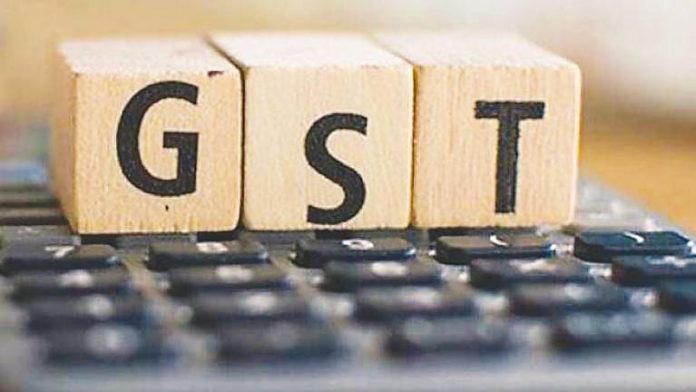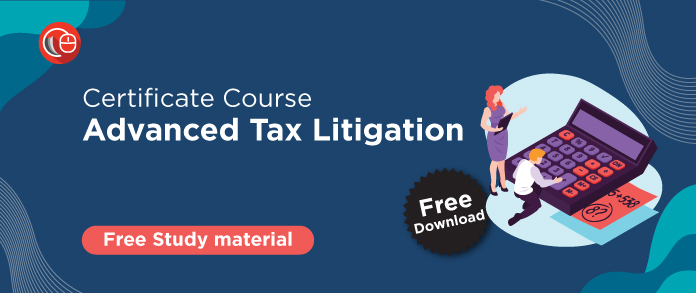This article has been written by Avinash Kumar, a student of School of Law, UPES Dehradun.
Table of Contents
Introduction
In the tax system, Registration of the business entity plays a vital role in collecting the tax on behalf of the government and to avail the Input Tax Credit. For collecting the tax from customers and availing the Input Tax Credit the registration of any business entity is very necessary under GST Law. If any business entity cannot register themselves then they can neither collect the tax from the customer and nor take the benefit of Input Tax Credit.
A person who has an aggregate turnover of more than 40 Lacs in the financial year then he is liable to be registered under the act, while for some special category states the aggregate turnover is 20 Lacs in a financial year for the registration of any business entity.
Basically, after the registration of any business entity, the tax authority provides the Unique Identification number which includes the Permanent Account Number (PAN) and State-specific number. Basically. Unique Identification Number is termed as the GST Identification Number (GSTIN) which is a fifteen-digit number. The first two digits of the GST Identification Number (GSTIN) represent the State code and the next ten digits represent the Permanent Account Number (PAN) of the taxpayer. After that, the thirteenth digit of the Unique Identification Number denotes the number of registration within the state and the fourteenth digit is Z by default and the fifteenth digit is for check code.
However, GST is divided into four categories like CGST, SGST, UTGST, and IGST but a person need not register himself for all categories, there is a single registration for all the taxes.
What is the benefit of Registration of GST?
The GST is an indirect tax whose main objective is to abolish several other indirect taxes in India. After the abolition of many indirect taxes, the government came up with one platform where a person could pay tax.
There is the following benefit of Registration Registration of GST, which are as follows:
The scrapping of cascading effect: After the enactment of GST in India, the cascading effect has been eliminated which used to cause double taxation on Goods. After the scrapping of the cascading effect, the tax liability has been reduced on the business entity.
Lesser Compliance: Before the enactment of GST in India, there were many indirect taxes used to exist such as the Service tax, VAT, Excise, etc. So after the enactment of GST, all the indirect tax combined into the single tax regime with which the number of filing has decreased.
Easy Application Procedure: A person can register himself online and he can file the GST through the GST portal which saves the time of the person.
Recognition: After the registration of GST, a person becomes legally recognized as a supplier of goods and services.
Regulation of Input Tax Credit: After the registration, a person can claim Input Tax Credit of taxes paid and can utilize the same for payment of taxes due to supply of goods and services which ensure transparency in the tax collection system.
Document required for registration of GST
A person has to submit the following documents at the time of registration of GST which are as follows:
PAN of the Applicant: An applicant has to submit the details of the Permanent Account Number (PAN) at the time of registration.
Aadhar card: At the time of registration of GST, an applicant has to submit a copy of Aadhar card.
Address proof of the place of the business: A person needs to submit the address proof of the place of business where he is planning to set up from where he wants to commence business.
Bank Account Statement: An applicant has to submit the bank account statement, cancelled cheque at the time of registration of GST.
Digital Signature: The digital signature of the applicant is necessary at the time of registration of GST.
Letter of Authorization: At the time of registration, a person needs to submit a letter of authorization or board resolution for the authorized signatory.
Incorporation Certificate: An incorporation certificate is a legal document or license which is related to the formation of a company, so a person needs to submit the incorporation certificate at the time of registration of GST
Identity and Address proof of the Directors: At the time of registration, a person has to submit the identity and address proof of the directors.
Person liable for Registration (Sec 22)
- Section 22 of the CGST Act talks about the person liable for registration. If a taxable supply of goods and services of a person exceeds forty lakh rupees in a financial year then he shall be liable for registration. However, for some special category state (Jammu & Kashmir, Ladakh, Assam, Puducherry, Meghalaya, Mizoram, Tripura, Manipur, Sikkim, Nagaland, Arunachal Pradesh, and Uttrakhand) the threshold limit of taxable supply of goods and services is twenty Lakh in a financial year which means that such special category state shall be liable for registration if his aggregate turnover in a financial year exceeds ten Lakh rupees.
- Every person who, on the day immediately preceding the appointed day, is registered or holds a license under existing law, shall be liable to be registered under this Act with effect from the appointed day.
- If in the case of transfer of business by the registered person then the transferee shall be liable to be registered with effect from the date of such transfer or succession.
- In the case of transfer according to the sanction of a scheme, amalgamation or in the case of the demerger of two companies by the order of High Court, Tribunals then the transferee of business shall be liable to be registered.
Aggregate turnover
Section 2(6) of CGST defines the Aggregate turnover. Aggregate turnover means the aggregate value of all taxable supplies, exempt supplies, exports of goods and services, the inter-state supply of persons having the same Permanent Account Number (PAN) to be computed on an all India basis.
However, the Aggregate turnover excludes taxes, if any charge under CGST Act, UTGST/SGST Act, and ITGST Act. The value of inward supplies on which tax is payable by the person on a reverse charge basis and the value of inward supplies are also excluded in Aggregate turnover.
Person not liable for Registration (Section 23)
Section 23 of CGST states that there is the following person who is not liable to registration.
Any person who is doing the business of Goods and services and if they are not liable to pay tax or wholly exempted from tax under this Act or the Integrated Goods and Services Tax Act, then such person is not liable for registration.
Agriculture income is exempted under Income Tax Act, 1961. So, an Agriculturist who is engaged in the supply or produce of crops is not liable for registration.
On the recommendation of the GST Council, the Government may from time to time issue the notification about the person who is not liable or may be exempted from obtaining registration under this Act.
Compulsory Registration (Section 24)
Section 24 of CGST talks about compulsory registration. Notwithstanding anything containing 22(1) of CGST, the following categories of persons shall be required to register under this act.
Inter-State taxable supply
When there is the supply of goods and services from one state to another state then this is termed as the Inter-State supply. Like, the goods and services from Bihar are transferred to Jharkhand then this will be termed as the Inter-State supply. So, if a person is making any inter-State supply then such shall have to register compulsorily.
Casual taxable person
Section 2(21) of GST defines the casual taxable person. When any person commences their business occasionally in another state or union territory where he has no fixed place of business then these will be called a casual taxable person.
Illustration: Let’s suppose that an auto company that is registered in Maharashtra and wants to conduct the auto race in Noida for a shorter period then they will have to register themselves in Noida for a shorter period.
However, the validity period of the GST certificate of registration for a casual taxable person shall be valid for ninety days from the date of registration.
So Casual taxable person making taxable supplies shall have to register compulsorily.
A person who required to pay tax under reverse charge mechanism
Reverse charge mechanism means that when the liability to pay the taxes is upon the recipient instead of the supplier. So, if a person is paying the tax under the Reverse charge mechanism then he shall have to register compulsorily.
Electronic commerce operator
Section 9(5) of CGST states that the government may, on the recommendation of the council, by notification, specify categories of services the tax on Intra – State supplies of which shall be paid by the electronic commerce operator if such services are supplied through it, and all the provisions of this Act shall apply to such electronic commerce operator as if he is supplier liable for paying the tax about the supply of such services.
Non Resident taxable person
A Non-Resident taxable person means any non-resident person who occasionally supplies the goods and services in India and who has no fixed place of business or residence in India then such person will be termed as the Non-Resident taxable person.
For example, a person from Australia comes to Patna to participate in a footwear exhibition, then in such circumstances, a person would need to register as a non – resident taxable person at Patna and he will be granted registration for a maximum period of Ninety days.
A non-Resident taxable person shall have to register compulsorily.
A person who is required to deduct tax under Sec 51
A person who is required to deduct tax under Section 51 of CGST, whether or not separately registered under this act.
Taxable supply of Goods & Services behalf of another person
If a person makes a taxable supply of goods and services or both on behalf of other taxable people whether as an agent or otherwise, then in such circumstances a person shall have to register compulsorily.
Input Service Distributor
When a business receives the invoices of services used by its branches it is termed as the Input Service Distributor (ISD). After that Head office distributes the tax by issuing ISD Invoices to all the branches.
Let’s understand with an example:
Chhabra is a company whose head office is located in Patna and their branches are located in Kolkata, Jharkhand, and Maharashtra. After that, the Head office spent the money on maintenance of all the computers on behalf of all its branches and received the invoice. Since the money spent on the maintenance of the computer is done for every branch that’s why the Input Tax Credit of the entire service cannot be claimed at Patna. Input Tax Credit will be distributed to all three branches and Patna which is head office will be termed as the Input Service Distributor.
Required to collect tax at source under Sec 52
When the supplier supplies the goods and services through its portal then the payment of that supply is collected by the Electronic Commerce Operator. Every electronic commerce operator who is required to collect tax at source under Section 52 of CGST shall have to register compulsorily.
Supplying online information outside India
If a person is supplying the online information and database access or retrieval services outside India and if they are not registered, then they shall have to register compulsorily.
Notification by government
On the recommendation of the GST council, the Government may from time to time notify the person liable for compulsory registration.
What is the Procedure for Registration (Section 25)
- After checking the criteria for registration under Section 22 or 24 of the CGST Act, if a person fulfils the criteria for registration then such person shall apply for registration in every state or Union territory within the thirty days from the date on which he becomes liable to registration.
- After the submission of the application, a proper officer has to take action within the three days of submission of the application or within the seven days of receiving the clarification so solicited, the applicant for the grant of registration is deemed to be approved.
- In the case of a casual taxable person or non-resident taxable person, a person shall apply for registration at least five days before the commencement of business.
- If a person is making the supply of Goods and services from territorial waters of India then in such a situation a person shall obtain the registration in the coastal State or Union Territory where the nearest point of the appropriate baseline is located.
- Only one registration has to be done for a single business in a State or Union Territory. However, if a person is engaged in multiple businesses in a State or Union Territory then in such a condition a person shall have to apply for separate registration.
- If a person is not liable to register under Section 22 or 24 of the CGST Act, then such person may get himself registered voluntarily and all the acts which apply to the registered person shall apply to such person.
- If a person has registered himself in more than one state or union territory, then in such a situation the person will be treated as a distinct person.
- Establishment of the same person in different states or Union territory to be treated as the establishment of a distinct person.
- A person shall have a Permanent Account Number issued under the Income Tax Act, 1961 to be eligible for grant of registration.
- Authority shall verify the registration details and after the verification, he shall issue the Unique Identity Number. However, if the authority finds any error then he has the authority to eject after the verification.
- A certificate of registration shall be issued in such form and with effect from such date as may be prescribed
Amendment of GST Registration
After the allotment of the Unique Identification Number, if a registered person wants to change the information given at the time of registration then in such a situation a registered person shall have to inform the proper office within fifteen days of receiving the unique identification number.
After the submission of changes required, it depends upon the discretion of the proper officer that they approve it or reject it. However, the proper officer shall not reject the application for registration without giving the person an opportunity of being heard
Cancellation of Registration (Section 29)
Section 29 of CGST talks about the cancellation of Registration. After the death of the registered person, the Proper officer himself or an application filed by the registered person, or his legal heirs cancel the registration. Cancelation of registration depends upon the discretion of the proper officer whether he wants to cancel it from a prospective or retrospective date. A registered person whose registration is cancelled will have to debit the electronic cash ledger or electronic credit ledger, by an amount equal to Input Tax Credit (ITC) so availed or the output tax liability, whichever is higher.
Conclusion
After coming to GST in India many indirect taxes have come under one umbrella which simplifies the tax process in India. Digitalization plays an important role in paying the tax via an easy mechanism online. GST reduces the multiplicity of taxes. Nowadays a person himself can check the criteria for registration and they can register themselves online. Registration of GST is a very easy process where there is no need to hire tax expertise. From time to time the government also issues the notification regarding the person liable for registration or the threshold limit for the registration of GST.
References
- http://gstcouncil.gov.in/sites/default/files/CGST.pdf
- https://cbic-gst.gov.in/CGST-bill-e.html
- https://www.gstzen.in
LawSikho has created a telegram group for exchanging legal knowledge, referrals and various opportunities. You can click on this link and join:












